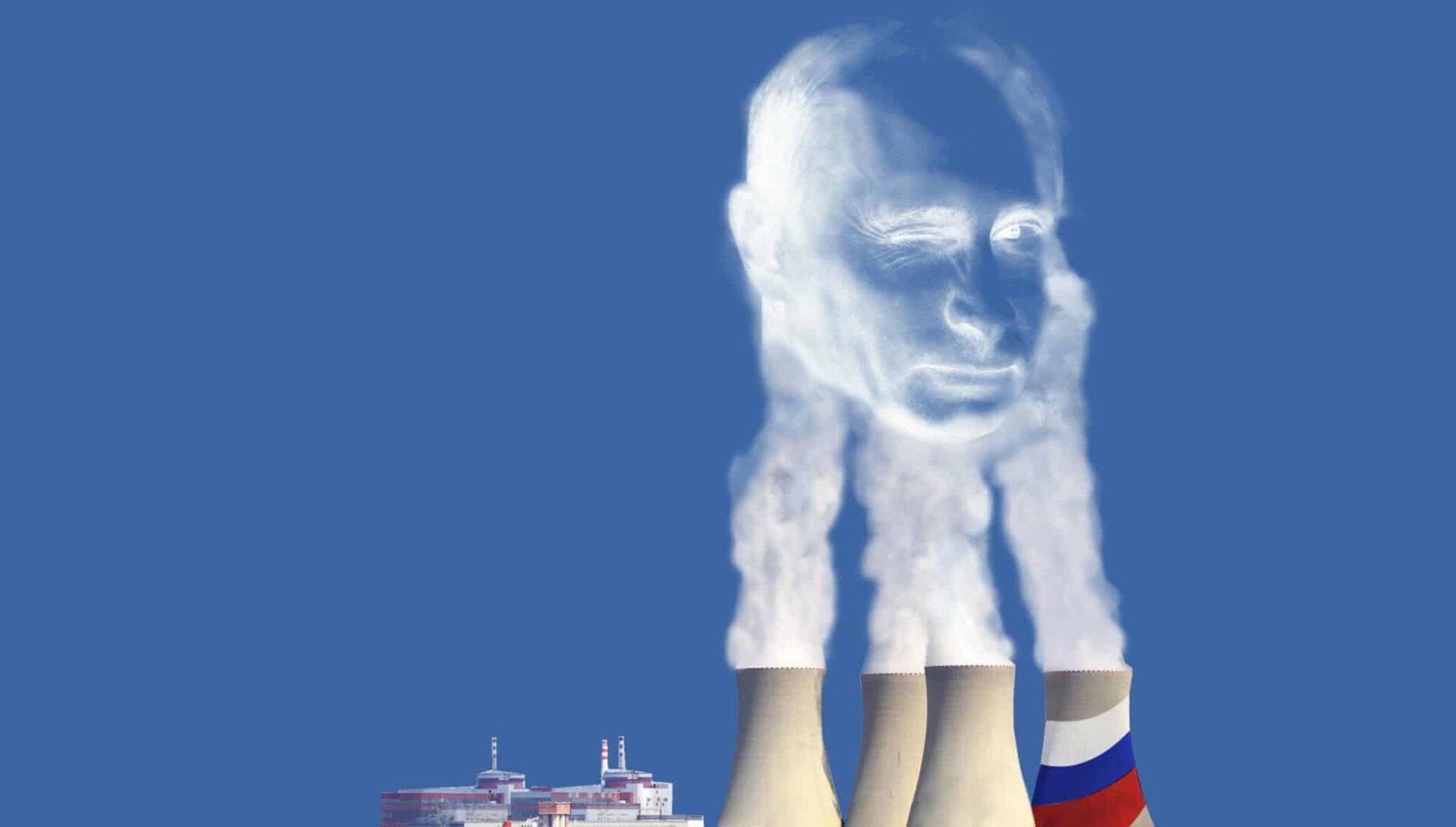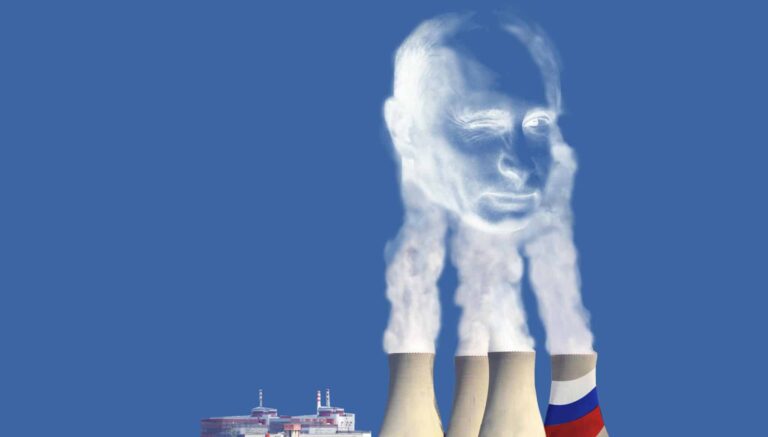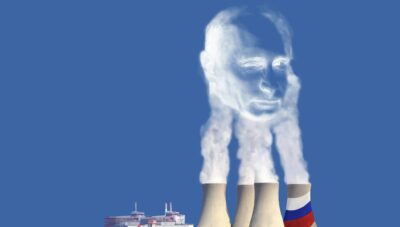Matej Gašparovič (ICJK)
Hana Čápová, Eva Kubániová (investigace.cz)
Graphics: Lenka Matoušková 2020-03-20
Matej Gašparovič (ICJK)
Hana Čápová, Eva Kubániová (investigace.cz)
Graphics: Lenka Matoušková 2020-03-20
30 years later after the fall of communism, Central Europe’s industries are connected to the West in innumerable ways. But signs that its nuclear industry continues to be heavily influenced by Russian interests are everywhere.
In the Czech Republic, the most prominent nuclear engineering company is owned by a Russian energy giant. In Slovakia, Russian-led banks, including the controversial International Investment Bank, are providing multi-million euro loans to the national firm that is building the country’s new nuclear reactors and a Russian supplier recently beat an American competitor in a public tender to provide nuclear fuel for the country’s nuclear plant.
In Hungary, meanwhile, Russia’s state nuclear company was hired to build the country’s new nuclear plant, and there are signs that Russian companies are taking further control of the Hungarian nuclear industry. Hungary has also taken steps to soften its licensing rules in order to speed up plant construction, a move that favors its Russian partners.
Hungary: favors to the Russians
In January 2014, the Hungarian government drew both domestic and international ire when it hired Rosatom, Russia’s state nuclear company, to build its new reactors with Russian funding without having issued a competitive public tender for the massive, 12-billion-euro project.
Since then, Russia’s influence on the Hungarian nuclear industry has only grown. In 2016, Rosatom took over Ganz EEM, a Hungarian company that had been well-positioned to be part of an upcoming nuclear plant construction project known as Paks 2.
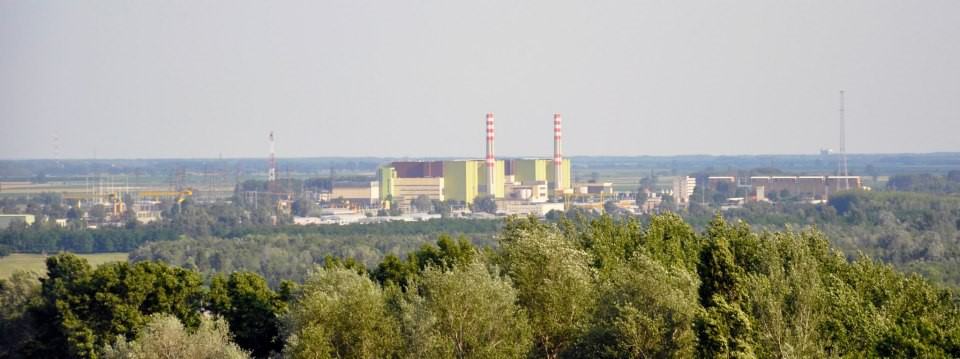
Hungarian nuclear power plant Paks 2. Credit: atomeromu.hu
As reported by Direkt36, the takeover was the result of a years-long conflict. Ganz EEM was established twelve years ago as a Russian-Hungarian joint venture between Rosatom and a Hungarian industrial company Ganz, but the relationship between the two firms was bitter from the start, eventually deteriorating so much that they wound up in court. Ganz ultimately became exhausted by the prolonged battle and sold its shares to Rosatom in 2016.
This development undercut the government’s goal that Hungarian companies carry out at least 40 percent of the nuclear plant’s construction — a failure even noted by Russian President Vladimir Putin in 2014 during the announcement of the deal. Sources from the construction industry told Direkt36 that Hungarian companies simply do not have the necessary experience and qualifications.
Paks 2 is still in an initial preparatory phase, and several of its early deadlines were missed. As reported by Reuters, recent legislative move by the Hungarian government aims to speed up its construction by amending its nuclear safety protocols, a move that would further benefit the Russians who had struggled to meet the safety standards required by the European Union and Hungarian authorities.
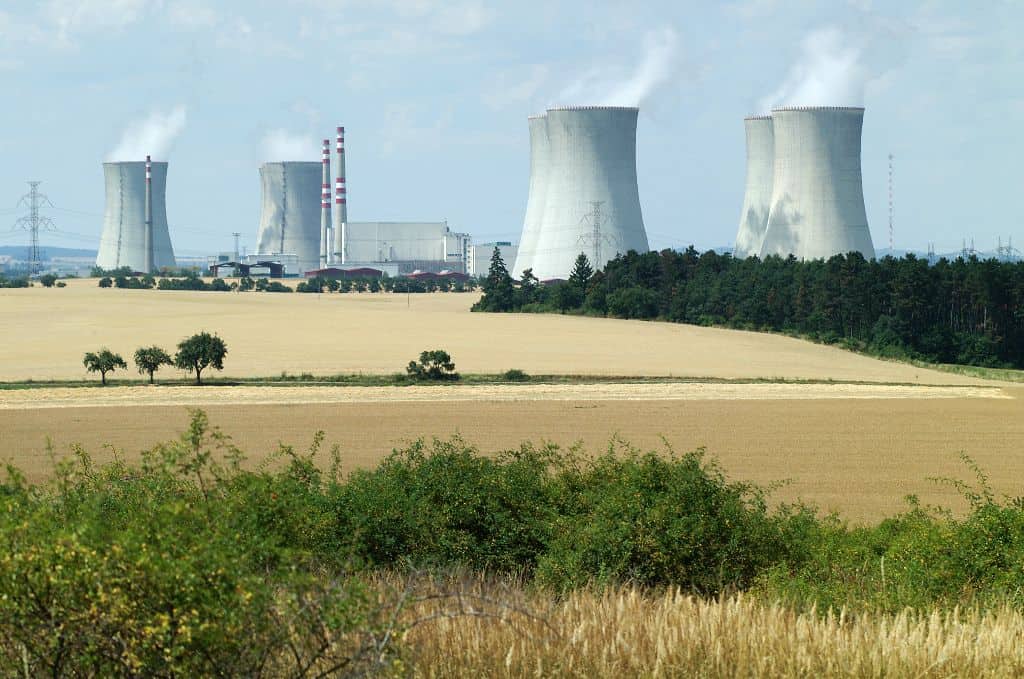
Czech nuclear power plant Dukovany. Credit: cez.cz
Czech Republic: “established relationship that works”
Rosatom is also trying to integrate itself into the Czech nuclear landscape.
In the coming years, the Czech Republic is set to begin rebuilding its Dukovany nuclear power plant, the tender for which has been under discussion for several years. Rosatom is one of the six companies interested in the project, and the contractor is scheduled to be selected by the end of 2022, with the new reactors up and running by 2029.
“Rosatom has the advantage of having experience with Temelin (another Czech power plant – VSquare note). It is an established relationship that works. But there are other alternatives,” energy expert Petr Zákoucký told investigace.cz. He added that there are at least three suppliers that should meet the criteria of the tender.
Dana Drábová, the chairman of the State Office for Nuclear Safety, said that the office does not evaluate “geopolitical aspects” in their evaluation of interested firms. “Anyone interested in a tender for the completion of Dukovany will propose pressurized light-water reactor technology as one of the criteria of ČEZ, the issuer. There is only one reason for this, which is that we have experience with it here in the Czech Republic.”
Because Russian technology was used when Czech nuclear power plants were first constructed, the issue of its compatibility with Western technology often comes up in discussions about their future. Drábová, however, sees this largely as a stakeholders’ strategy, and notes that the Czech Republic’s Temelin nuclear power plant, which was completed in large part by the American company Westinghouse, has not had to deal with any issues of incompatibility. “Incompatibilities are often highlighted by stakeholders and described as weaknesses,” she says.
Energy expert Zákoucký doesn’t think concerns with Russian interest should play a role in discussions about the nuclear plant’s re-construction. “Even if Dukovany is constructed by the Russians, that does not mean that they will operate it.”
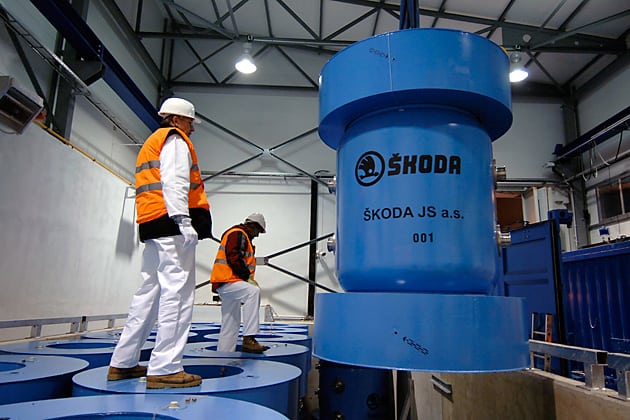
Škoda JS – Czech major nuclear engineering company. Credit: Flickr
Owned by Gazprom, subsidized by the Czech company
Another Russian representative on the Czech nuclear market is Škoda JS (unrelated to the car manufacturer – VSquare note). It is owned by the Russian giant Gazprom through a network of several companies. In addition to significant domestic activities in Dukovany and Temelín, Škoda JS is also active in its foreign neighbors´ markets. In Slovakia, the firm is involved in the completion of the Mochovce nuclear power plant, in Ukraine, in the modernization of the Zaporozhye nuclear power plant, and in Hungary, participates in the replacement of the control and management system of Paks 2.
According to the Central Register of Budget Subsidies (CEDR), Škoda JS has received subsidies totaling EUR 5 544 000 from 1999 to 2015, mainly from the Ministry of Industry and Trade. These annual sums have ranged from EUR 21 600 euro to EUR 612 000 The firm has also received subsidies from the State Office for Nuclear Safety and the European Operational PRogram Enterprise and Innovation, the latter giving it a significant EUR 2 088 000.
Drábová says Škoda JS “could get more work, but Gazprombank doesn’t give it much chance.” She points out that the firm also gets contracts from the French, and has supplied Chinese nuclear power plants built by French companies. “The question is why the Russians will not get more contracts [on behalf of the firm]. Škoda JS has more than fifty years of history and does not have as many contracts as it deserves,” Drábová adds.
But its Russian owners have different plans for the Czech engineering company: according to the Mergermarket database, Škoda JS is currently negotiating its sale. Whether it will be a subcontractor under the wing of the Russians or of a different owner is not yet known. “The key role of Škoda JS will be necessary. Support of Czech industry will certainly appear in Dukovany´s tender documentation as one of the parameters. From this perspective, there is no one else in the Czech Republic except Škoda JS, which already works as a general subcontractor. It is the only company that has references and is able to coordinate work with other subcontractors”, describes Petr Zákoucký’s competitive advantages of Škoda JS.
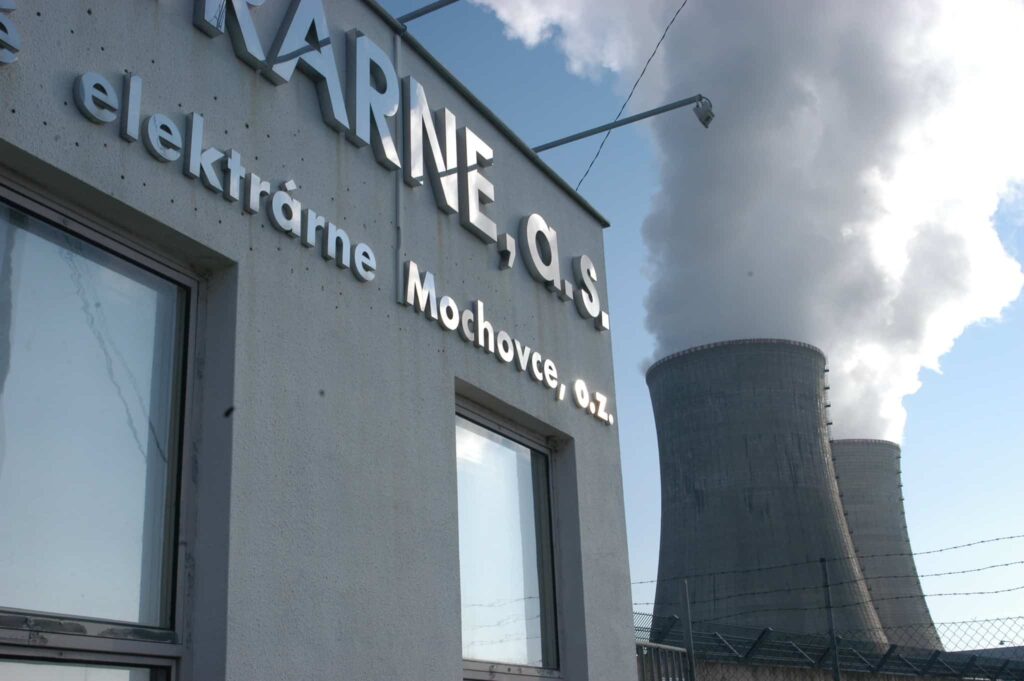
Slovak nuclear power plant Mochovce. Credit: Flickr
Slovakia: Credit line from Moscow
In Slovakia, Škoda JS carried out large parts of the Mochovce nuclear plant construction, which has suffered several delays and setbacks in the past three decades. Beyond the Czech-based and Russian-owned Škoda JS, other Russian entities – including banks – have also been involved in the country’s nuclear industry.
The Italian owner of Slovenské elektrárne, the company that runs Mochovce, received a substantial EUR 870 million loan from subsidiaries of Sberbank, Russia’s largest bank, in 2014.
This doesn’t mean the plant is affected by Russian interests, Miroslav Šarišský, the spokesperson for Mochovce, says “Slovenské elektrárne has loans from more than twenty banks, and their total volume is several times larger than the loan from Sberbank.” He also denied that the plant has received any other loans from Russia beyond that from Sberbank, adding that their loans are “diversified to the maximum extent” and that the firm works with many leading European and American banks. The plant declined to provide any further information about the loan and the conditions it was agreed upon. “Details of the credit terms, their maturity and others cannot be disclosed, it is a standard condition for similar contracts,” said the spokesperson.
However, Sberbank is not the only bank with connections to the Russian government that has become involved in the Mochovce investment.
Two years ago, the Russian-led International Investment Bank (IIB) announced that it lent 60 million euros to Slovenské elektrárne for a seven year period. At the time, the bank noted that its “support of the Slovak energy giant” was its biggest investment in Slovakia. This loan constituted a major proportion of IIB’s entire Slovakian portfolio at the time, and according to Šarišský, its general purpose included increasing environmental protections and electricity production in hydroelectric power plants.
The Russian-led bank has since become the center of an international controversy. In 2015, Hungary decided to join the bank, which already counts other Eastern European countries, including Slovakia, among its membership, and even invited IIB to move its headquarters to Budapest. The bank’s relocation to Hungary has drawn criticism from several Western allies, including the United States, who say that the bank could be a tool for the Russian intelligence services.
Russian vs American fuel
Last year, the managers of Slovenské elektrárne faced a major decision: the firm’s long-term nuclear fuel supply contract had been terminated and a new one was set to be negotiated. Unlike in the past, when its options were limited to Russian providers, the choices were now more varied, with an American company named Westinghouse competing alongside a Russian fuel supplier.
American fuel, however, is still not well adapted to the Russian-style reactors, with problems related to this incompatibility having already been raised at the Czech power plant in Temelín.
Therefore, in order for Americans to participate in the Slovak tender, their product would first have to use a compatible type of fuel as identified by the national nuclear supervisory authority and the ESA (Euratom Supply Agency). According to information obtained by the Investigative Center of Ján Kuciak, Westinghouse insisted that this expensive certification and testing of fuel rods be paid for by Slovakia. Westinghouse’s offer was also more expensive than the Russian firm, so the Slovenské elektráme’s managers ultimately chose the Russian bid.
“The Americans have started intensifying lobbying, including alerting the Russian threat, and the like, but the fact is that they didn’t come up with the finished product at a good price,” a source from a Slovakian power plant said.
This text was financially supported by GACC (The Global Anti-Corruption Consortium) aimed at the Visegrad countries. Member centers Átlátszo and Direkt36 from Hungary, Fundacja Reporterów from Poland, Ján Kuciak Investigative Center from Slovakia and investigace.cz from the Czech Republic are working on the project.

